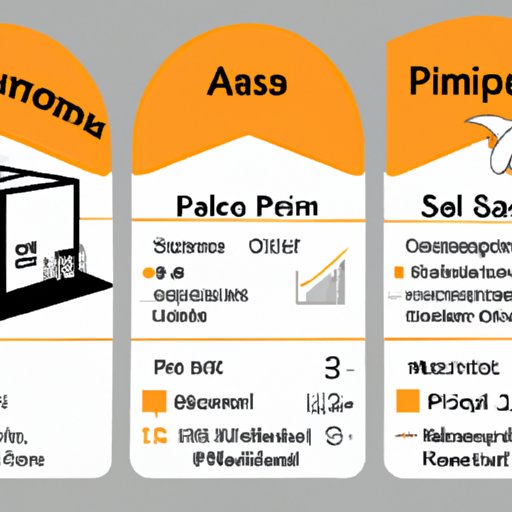Introduction
Are you looking for a way to make money online? Starting an Amazon seller business is one of the most popular methods for generating income through ecommerce. In this guide, we’ll provide a step-by-step overview of how to become an Amazon seller, from researching the marketplace and setting up your seller account, to creating listings, utilizing fulfillment services, and leveraging Amazon’s advertising and analytics tools.

What You Need to Know About Starting an Amazon Seller Business
Before you get started, it’s important to understand the basics of selling on Amazon, including the advantages of being an Amazon seller and the fees associated with selling on the platform. As an Amazon seller, you’ll have access to millions of customers all over the world, as well as powerful tools that make managing your business easier. There are two main fees associated with selling on Amazon: a referral fee and a variable closing fee. The referral fee is a percentage of the total sale price (not including shipping costs), and varies depending on the product category. The variable closing fee is a flat fee per item sold.
Research the Amazon Marketplace and Set Up Your Seller Account
The first step in becoming an Amazon seller is to research the marketplace and set up your seller account. Understanding the Amazon Marketplace is essential for success, so take the time to familiarize yourself with the different product categories, selling requirements, and customer expectations. Once you’ve done your research, you can move on to setting up your account. This process involves providing basic information about your business, such as contact details, payment information, and tax information.

Choose Your Product Category and Source Your Inventory
Now it’s time to decide which products you’ll sell. Take some time to identify popular selling categories and analyze the competition. You should also research the best sources for purchasing your inventory. Depending on what type of products you’re selling, you may be able to find wholesale suppliers or dropshipping services that can provide you with the items you need.
Create Detailed Listings with Keywords and Attractive Photos
Once you’ve sourced your inventory, you’ll need to create detailed listings for each product. Crafting descriptions that accurately describe the product and that include relevant keywords can help you rank higher in search results and increase visibility. You’ll also want to take professional-looking photos that showcase the product from multiple angles.
Establish Pricing Strategies to Maximize Profits
When it comes to pricing your products, it’s important to strike a balance between competitiveness and profitability. Analyzing competitors’ prices can help you determine the right price point for your own products. Additionally, offering discounts can encourage customers to purchase more items. Just be sure to keep an eye on your profit margins and adjust your prices accordingly.

Utilize Fulfillment by Amazon Services
Fulfillment by Amazon (FBA) is a service offered by Amazon that allows sellers to store their products in Amazon’s fulfillment centers and have them shipped directly to customers. FBA offers a number of benefits, including improved delivery times and better customer service. It also simplifies the shipping and handling processes, freeing up your time to focus on other aspects of your business.
Leverage Amazon Advertising Tools
Advertising is an important part of any Amazon seller’s strategy. Amazon offers several advertising tools, such as Sponsored Products and Headline Search Ads, that allow you to reach potential customers and increase sales. To optimize your ads, use relevant keywords, offer competitive prices, and target the right audience.

Track Performance with Amazon Analytics
Finally, tracking performance is key to understanding how your business is doing and making improvements. Amazon provides a variety of analytics tools that allow you to monitor metrics such as sales, traffic, and conversion rates. Analyzing this data can help you make informed decisions about pricing, advertising, and other aspects of your business.
Conclusion
Starting an Amazon seller business can be an excellent way to make money online. In this guide, we provided an overview of the steps you need to take to start your business, from researching the Amazon Marketplace and setting up your account, to crafting detailed listings, utilizing fulfillment services, and leveraging advertising tools. With hard work and dedication, you can be on your way to becoming a successful Amazon seller.
(Note: Is this article not meeting your expectations? Do you have knowledge or insights to share? Unlock new opportunities and expand your reach by joining our authors team. Click Registration to join us and share your expertise with our readers.)
